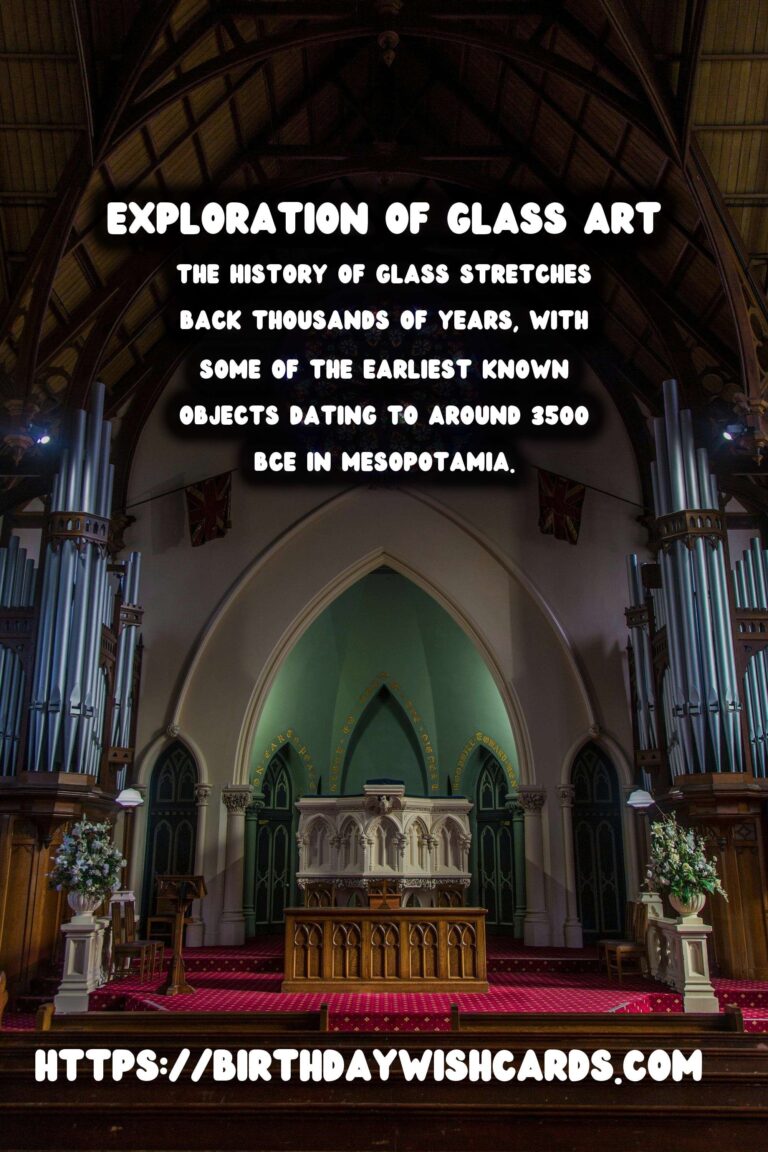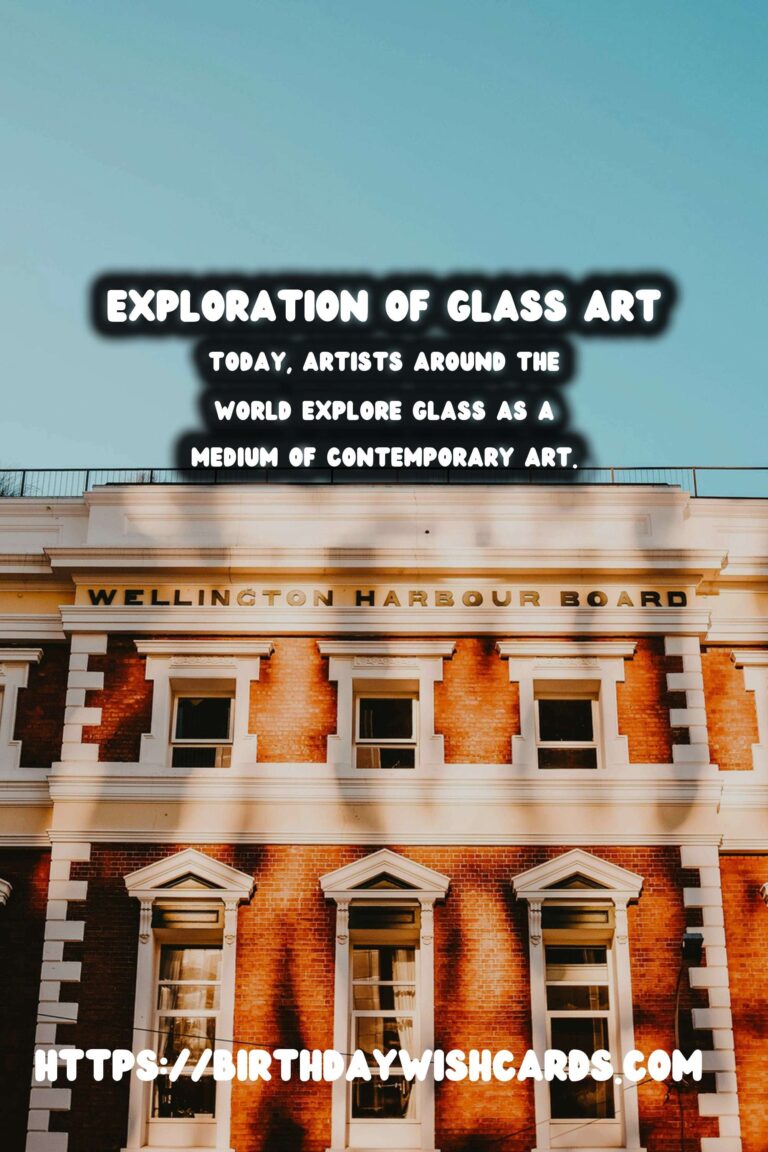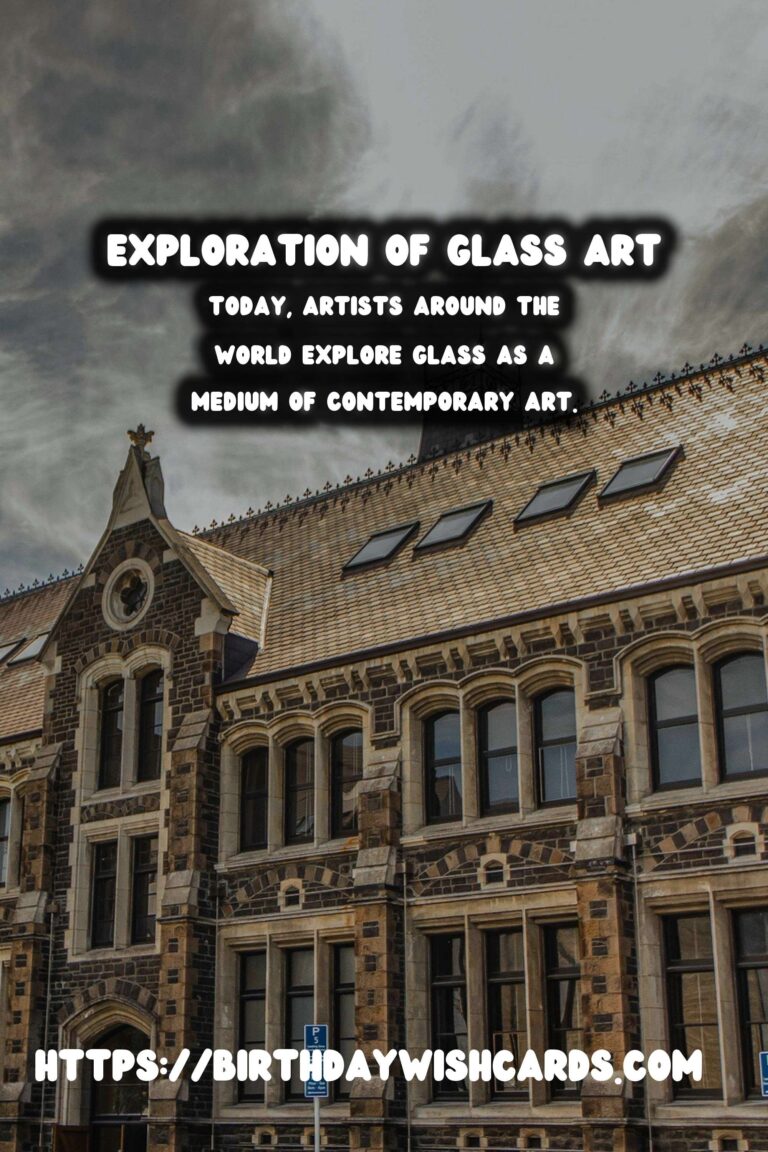
For centuries, glass has been an integral part of human civilization, having been utilized for both functional and decorative purposes. Its history marks a fascinating journey from the rudimentary objects of the ancient world to the exquisite works of modern art.
The Origins of Glass
The history of glass stretches back thousands of years, with some of the earliest known objects dating to around 3500 BCE in Mesopotamia. Initially, glass was a byproduct of metal and ceramic production, appearing as glazed coatings on stone beads. These early glassmakers laid the foundation for a craft that would evolve over millennia.
Ancient Roman Glassware
The Romans were masters of glassware production, innovating techniques that would spread across the ancient world. Roman glassworkers perfected the art of glassblowing, allowing for greater versatility in design and function. This innovation transformed glass from a luxury item only available to the wealthy into everyday objects accessible to a broader audience.
During this period, glass was commonly used in the creation of vessels, windows, and decorative items. The renowned Lycurgus Cup, a Roman glass object that changes color depending on light exposure, showcases the sophistication of Roman glassmaking.
Medieval and Renaissance Glass
Following the fall of the Roman Empire, glassmaking knowledge became concentrated in centers such as Constantinople and Venice. The Venetian glassmakers of Murano became especially famed for their craftsmanship, pioneering the development of crystal glass. Their delicate, intricate creations became symbols of wealth and prestige across Europe.
During the Renaissance, glass became a medium for artistic expression. Artists and artisans experimented with different techniques, including staining and enamel, to create vibrant stained glass windows for cathedrals and fine glassware for the affluent.
Industrial Revolution and the Advent of Modern Glass
The Industrial Revolution of the 18th and 19th centuries revolutionized glass production. The invention of the modern glass bottle-making process and the ability to produce large sheets of glass enabled new applications, from preserving food to constructing revolutionary buildings like The Crystal Palace.
With the advent of electric lighting, glass took on a critical role in creating bulbs, while innovations such as tempered glass found applications in safety and each architectural marvel.
Glass in Modern Art
Today, artists around the world explore glass as a medium of contemporary art. From the breathtaking installations by artists like Dale Chihuly to innovative uses in functional design, glass continues to inspire and captivate.
The versatility and beauty of glass make it a preferred material for artists seeking to explore themes of transparency, light, and color. Whether through monumental sculptures or delicate jewelry, glass art remains a dynamic and evolving field.
The Future of Glass
Looking ahead, glass is poised to play a vital role in numerous industries, including technology and construction. Its unique properties make it an ideal candidate for smart technology applications, solar energy solutions, and environmentally sustainable building materials.
From its humble beginnings to its role as a modern technological material, the history of glass is a story of creativity, innovation, and transformation. As we continue to explore its potential, glass will undoubtedly remain an integral part of our world.
The history of glass stretches back thousands of years, with some of the earliest known objects dating to around 3500 BCE in Mesopotamia. Today, artists around the world explore glass as a medium of contemporary art. 









#GlassHistory #ModernArt




